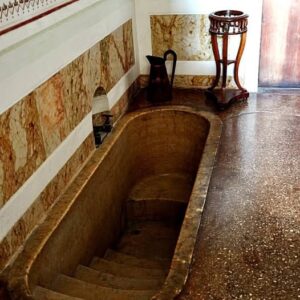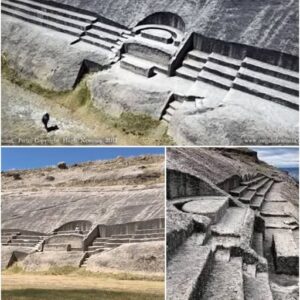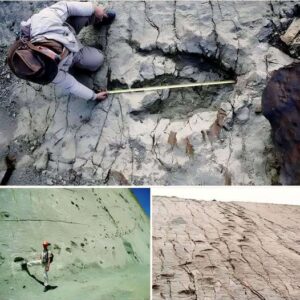Deep in the serene landscapes of Bulgaria, archaeologists have unearthed a mesmerizing discovery—a remarkably well-preserved wooden chariot dating back 2,000 years. This ancient marvel is intricately adorned with vibrant illustrations inspired by Thracian mythology, offering a captivating glimpse into the burial customs and spiritual beliefs of the once-thriving ancient Thracian civilization in the region.
Discovered within the tomb of a prominent Thracian noble believed to originate from the 1st century AD, the chariot stands as a testament to the exceptional craftsmanship of its time. Featuring four massive wheels, each an impressive 4 feet in diameter, the chariot is embellished with exquisitely detailed silver-coated sculptures depicting the god Eros and enigmatic creatures resembling panthers.

In addition to the chariot, the archaeological site revealed the remains of two horses and a dog. These animals were likely interred alongside the noble to provide both companionship and transportation in the afterlife—a poignant reflection of the profound beliefs in continued existence held by the Thracian people. This discovery underscores the central role of elaborate funerary customs in Thracian society, shedding light on their enduring conviction in an existence beyond mortal life.
The unearthing of this remarkable artifact serves to illuminate the rich cultural heritage and elaborate traditions of the ancient Thracian civilization, which once thrived in the rural heartland of Bulgaria. Through the intricate imagery and craftsmanship displayed on the chariot, we gain insight into the artistic prowess and spiritual depth of a people who left an indelible mark on history.
In conclusion, the discovery of the Thracian chariot is a symbolic reminder of the enduring legacy of the ancient Thracian civilization, showcasing their sophisticated craftsmanship, spiritual beliefs, and reverence for the mysteries of life and death. This mythical treasure stands as a testament to the ingenuity and creativity of a civilization that flourished two millennia ago, leaving behind a rich tapestry of cultural heritage for us to uncover and admire.





